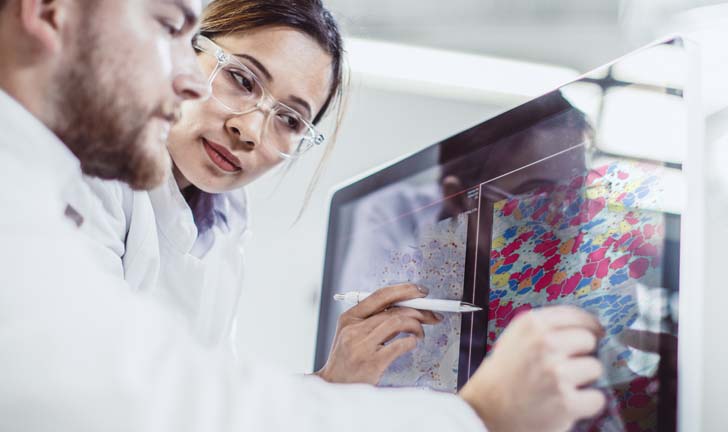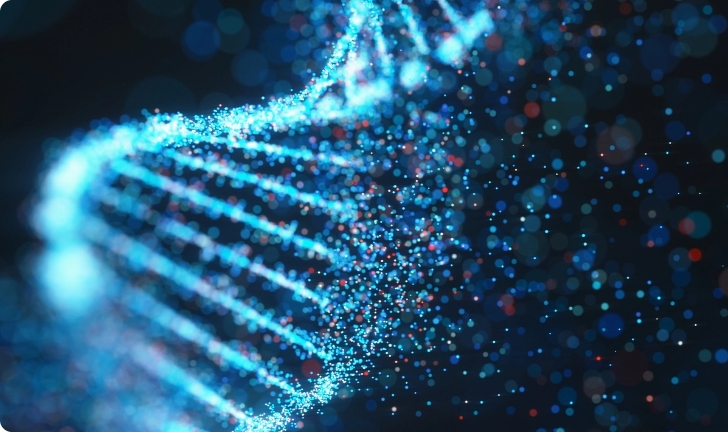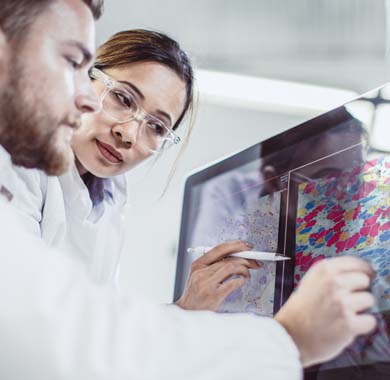Data Science


Image Analysis
A range of new imaging-based methods make it possible to explore the architecture of tissue samples both at the transcriptomics and proteomics level. Multiplexed in situ RNA detection methods map mRNA molecules at sub-cellular resolution, and multiplex immunohistochemical staining make it possible to detect and identify a large number of different cell types in the same tissue sample, enabling the discovery of their functional role inside the tissue architecture.
The first step toward further interpretation of the data is detection and decoding, or classification, of each individual object; in this case, resulting in maps of the locations of either specific mRNA molecules or cells. One of the key challenges in fully exploiting this type of spatially resolved data is the availability of appropriate computational methods. The second step in interpretation is to be able to quantify relationships and patterns in an unbiased and reproducible way, and provide confidence measures for observed patterns as compared to a more randomized organization. This is often referred to as spatial statistics.
Flagship Biosciences utilizes a combination of expert image analyst guidance, pathologist review, and machine learning methodology to ensure the best quality data from your tissue samples. Expert image analysts guide Flagship’s proprietary software through the image analysis pipeline from scanning through final results. Image QC is manually performed with guidance from Flagship’s software to identify artifacts in images. These artifacts are manually excluded from the analysis, and a custom spectral unmixing, specifically tuned to Flagship’s instruments, is performed for multiplex assays. Image analysts identify training regions within the image to train the machine learning algorithms to identify features and classifications specified by the client. These algorithms can be trained to almost any classification exercise desired. Quantification of biomarkers is obtained for the classification regions, and thresholds are set to bin each biomarker into categories, such as positive or negative and high, medium, and low.
At each stage of the analysis Flagship’s expert scientists and pathologists review the images and data to ensure the highest quality data possible.




